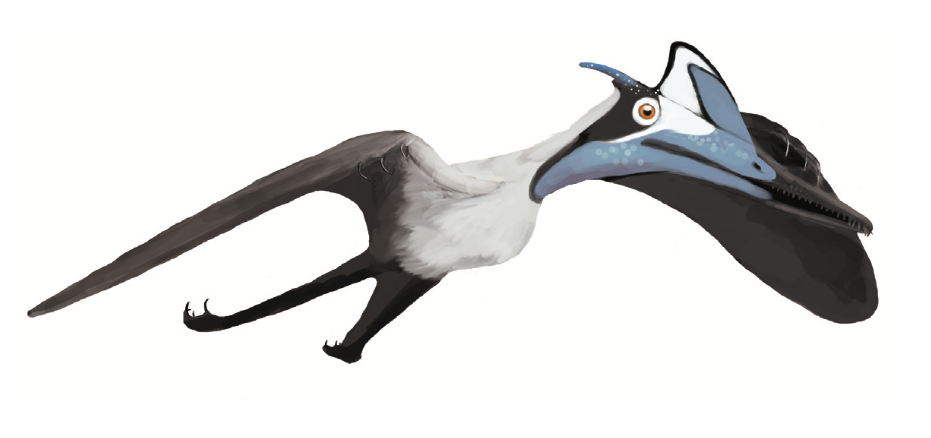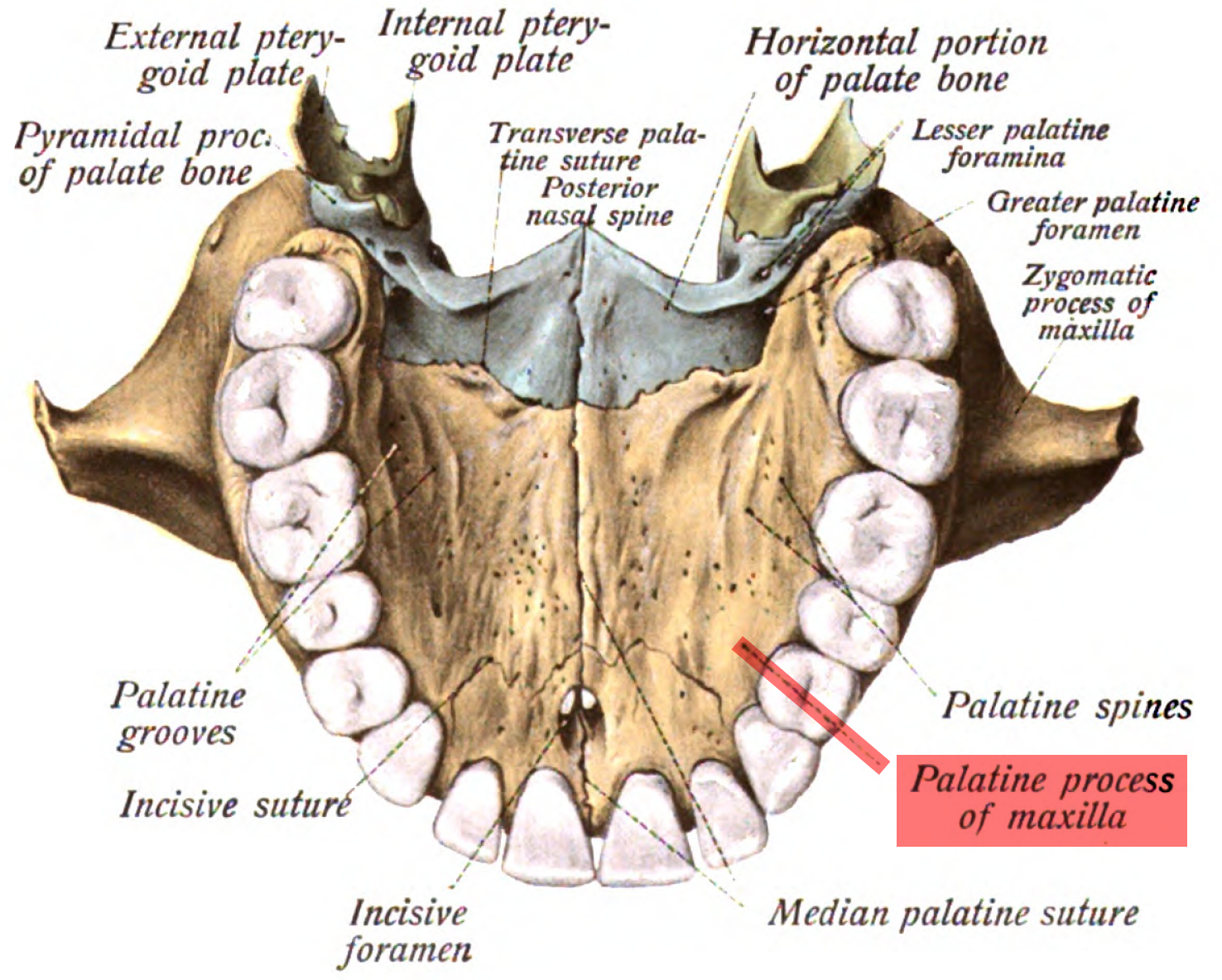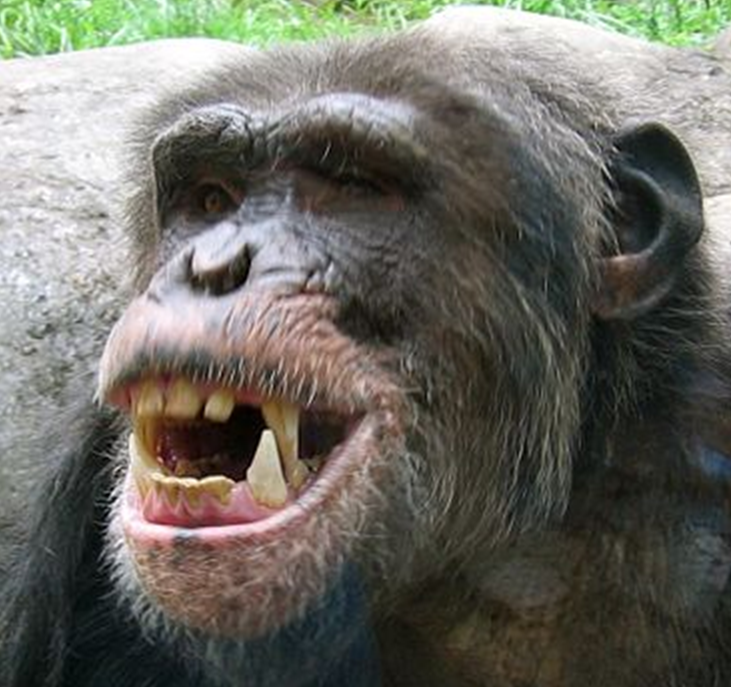|
Normannognathus
''Normannognathus'' is a genus of pterosaur from the Kimmeridgian-age Upper Jurassic Argiles d'Octeville Formation of France. Initially, ''Normannognathus'' was classified to the family Germanodactylidae, sister taxon to ''Germanodactylus'', however, many recent analysis have recovered ''Normannognathus'' in different phylogenetic positions, and depending on different authors, ''Normannognathus'' is either found as a basal member of the Dsungaripteroidea, as an indeterminate monofenestratan, or as the sister taxon of '' Cycnorhamphus'' within the family Gallodactylidae. Discovery and naming In 1993, Jean-Jacques Lepage on the Normandy coast at the Cap de la Hève, near Ecqueville, Octeville-sur-Mer, Seine-Maritime, Normandy, found a ten centimetres long fossil of a pterosaur in a marine claystone layer. In 1998, Eric Buffetaut ''et al.'' named a separate genus for it. The type species is ''Normannognathus wellnhoferi''. The genus name is derived from ''Normannia'', the Med ... [...More Info...] [...Related Items...] OR: [Wikipedia] [Google] [Baidu] |
Germanodactylidae
Germanodactylidae is a controversial group of pterosaurs within the suborder Pterodactyloidea. It was first named by Yang Zhongjian in 1964, and given a formal phylogenetic definition in 2014 by Brian Andres, James Clark, and Xu Xing. They defined it as the least inclusive clade containing ''Germanodactylus cristatus'' and ''Normannognathus wellnhoferi'', which they considered to be close relatives at the time. However, more recent studies by the same researchers have found that these pterosaurs may be only distantly related. Studies performed in the 2000s suggested this group it contained three genera: ''Germanodactylus'', '' Normannognathus'' and ''Tendaguripterus''. Various studies have since placed these pterosaurs within the larger clades Archaeopterodactyloidea, Eupterodactyloidea, or Dsungaripteroidea, though it has also been recovered within the Ctenochasmatoidea. In several 2010s studies, the supposed "germanodactylid" species were not necessarily found to form a natur ... [...More Info...] [...Related Items...] OR: [Wikipedia] [Google] [Baidu] |
Gallodactylidae
Gallodactylidae is a group of pterosaurs within the suborder Pterodactyloidea. Gallodactylids differed from other related pterosaurs in several distinct features, including fewer than 50 teeth present only in the jaw tips, and rounded crests present on the rear portion of the skull and jaws but not near the ends of their snouts. At least some species possessed jaw flanges, possibly used to bissect hard-shelled prey. History Gallodactylidae was named to contain ''Gallodactylus'' (now usually considered a synonym of ''Cycnorhamphus'') and its closest relatives. Many subsequent studies, however, showed that ''Gallodactylus'' did not form a clade with any non-synonymous pterosaurs that were not themselves part of a different family, and so the name was often ignored. The name returned to common use with the discovery of ''Gladocephaloideus'', a Chinese pterosaur species that shared many similarities with ''Cycnorhamphus''. Among other features, the Gallodactylidae was distinguished by ... [...More Info...] [...Related Items...] OR: [Wikipedia] [Google] [Baidu] |
Cycnorhamphus
''Cycnorhamphus'' (meaning "swan beak") is a genus of gallodactylid ctenochasmatoid pterosaur from the Late Jurassic period of France and Germany, about 152 million years ago. It is probably synonymous with the genus ''Gallodactylus''. History In 1855, a fossil in a plate of shale from the Kimmeridgian, found near Nusplingen in Württemberg, holotype GPIT "Orig. Quenstedt 1855, Taf. 1" or GPIT 80, was named ''Pterodactylus Suevicus'' by Friedrich August Quenstedt. The specific name refers to the tribal area of Suevia. Quenstedt had earlier mentioned the find in a letter to Professor Heinrich Georg Bronn, which was published in 1854. In it he used the name ''Pterodactylus Württembergicus''. In 1855 and 1858, Christian Erich Hermann von Meyer adopted this older species name but it would be forgotten afterwards. The publication in 1854 was not meant to be a nomenclatural act. According to Peter Wellnhofer, ''Pterodactylus württembergicus'' should be considered a ''nomen oblitum' ... [...More Info...] [...Related Items...] OR: [Wikipedia] [Google] [Baidu] |
Ctenochasmatoidea
Ctenochasmatoidea is a group of early pterosaurs within the suborder Pterodactyloidea. Their remains are usually found in what were once coastal or lake environments. They generally had long wings, long necks, and highly specialized teeth. Evolutionary history The earliest known ctenochasmatoid remains date to the Late Jurassic Kimmeridgian age. Previously, a fossil jaw recovered from the Middle Jurassic Stonesfield Slate formation in the United Kingdom, was considered the oldest known. This specimen supposedly represented a member of the family Ctenochasmatidae,Buffetaut, E. and Jeffrey, P. (2012). "A ctenochasmatid pterosaur from the Stonesfield Slate (Bathonian, Middle Jurassic) of Oxfordshire, England." ''Geological Magazine'', (advance online publication) though further examination suggested it belonged to a teleosaurid stem-crocodilian instead of a pterosaur. Ecology Most ctenochasmatoids were aquatic or semi-aquatic pterosaurs, possessing large webbed hindfeet and long ... [...More Info...] [...Related Items...] OR: [Wikipedia] [Google] [Baidu] |
Germanodactylus
''Germanodactylus'' ("German finger") is a genus of germanodactylid pterodactyloid pterosaur from Upper Jurassic-age rocks of Germany, including the Solnhofen Limestone. Its specimens were long thought to pertain to '' Pterodactylus''. The head crest of ''Germanodactylus'' is a distinctive feature. History ''G. cristatus'' is based on specimen BSP 1892.IV.1, from the Solnhofen limestone of Eichstätt, Germany. It was originally described by Plieninger in 1901 as a specimen of ''Pterodactylus kochi'', and was given its current specific name by Carl Wiman in 1925, meaning "crested" in Latin. Yang Zhongjian determined that it deserved its own genus in 1964. A second species called ''G. ramphastinus'' (in 1858 accidentally revised to ''rhamphastinus'' by Christian Erich Hermann von Meyer) was named as a distinct species long before ''G. cristatus'', described by Johann Andreas Wagner in 1851 as a species of the now deprecated genus '' Ornithocephalus''. The specific name refe ... [...More Info...] [...Related Items...] OR: [Wikipedia] [Google] [Baidu] |
Dsungaripteroidea
Dsungaripteroidea is a group of pterosaurs within the suborder Pterodactyloidea. Evolutionary history The earliest known fossils attributed to this group are from the Kimmeridgian-age Upper Jurassic Argiles d'Octeville Formation of France, dated to around 155 million years ago, and belonging to the species ''Normannognathus wellnhoferi''.Buffetaut, E., Lepage, J.-J., and Lepage, G. (1998). A new pterodactyloid pterosaur from the Kimmeridgian of the Cap de la Hève (Normandy, France). ''Geological Magazine'' 135(5):719–722. Classification The Dsungaripteroidea was defined in 2003 by David Unwin. Unwin made Dsungaripteroidea the most inclusive clade containing both ''Dsungaripterus weii'' and ''Germanodactylus cristatus''.Unwin, D. M., (2003). "On the phylogeny and evolutionary history of pterosaurs." Pp. 139-190. in Buffetaut, E. & Mazin, J.-M., (eds.) (2003). ''Evolution and Palaeobiology of Pterosaurs''. Geological Society of London, Special Publications 217, London, 1-347. ... [...More Info...] [...Related Items...] OR: [Wikipedia] [Google] [Baidu] |
Argiles D'Octeville
The Argiles d'Octeville (meaning Octeville-sur-Mer, Octeville Clay) is a geological Formation (geology), formation in Normandy, France. It dates back to the Kimmeridgian stage of the Late Jurassic.Weishampel, David B; et al. (2004). "Dinosaur distribution (Late Jurassic, Europe)." In: Weishampel, David B.; Dodson, Peter; and Osmólska, Halszka (eds.): The Dinosauria, 2nd, Berkeley: University of California Press. Pp. 545–549. . It is equivalent to the Kimmeridge Clay in England and predominantly consists of Mudrock, claystone, with some limestone.M. Saint-Germès, F. Baudin, J.-F. Deconinck, P. Hantzpergue, Y. Samson. 1996. Sédimentologie de la matière organique et des argiles du Kimméridgien de Normandie (région du Havre) (Sedimentology of organic matter and day mineralogy in the Kimmeridgian of Normandy (Le Havre area)) It is well exposed in cliff section at :fr:Cap_de_la_Hève, Cap de la Hève Vertebrate fauna See also * List of dinosaur-bearing rock formations Referen ... [...More Info...] [...Related Items...] OR: [Wikipedia] [Google] [Baidu] |
Dentary
In anatomy, the mandible, lower jaw or jawbone is the largest, strongest and lowest bone in the human facial skeleton. It forms the lower jaw and holds the lower tooth, teeth in place. The mandible sits beneath the maxilla. It is the only movable bone of the skull (discounting the ossicles of the middle ear). It is connected to the temporal bones by the temporomandibular joints. The bone is formed prenatal development, in the fetus from a fusion of the left and right mandibular prominences, and the point where these sides join, the mandibular symphysis, is still visible as a faint ridge in the midline. Like other symphyses in the body, this is a midline articulation where the bones are joined by fibrocartilage, but this articulation fuses together in early childhood.Illustrated Anatomy of the Head and Neck, Fehrenbach and Herring, Elsevier, 2012, p. 59 The word "mandible" derives from the Latin word ''mandibula'', "jawbone" (literally "one used for chewing"), from ''wikt:mandere ... [...More Info...] [...Related Items...] OR: [Wikipedia] [Google] [Baidu] |
Maxilla
The maxilla (plural: ''maxillae'' ) in vertebrates is the upper fixed (not fixed in Neopterygii) bone of the jaw formed from the fusion of two maxillary bones. In humans, the upper jaw includes the hard palate in the front of the mouth. The two maxillary bones are fused at the intermaxillary suture, forming the anterior nasal spine. This is similar to the mandible (lower jaw), which is also a fusion of two mandibular bones at the mandibular symphysis. The mandible is the movable part of the jaw. Structure In humans, the maxilla consists of: * The body of the maxilla * Four processes ** the zygomatic process ** the frontal process of maxilla ** the alveolar process ** the palatine process * three surfaces – anterior, posterior, medial * the Infraorbital foramen * the maxillary sinus * the incisive foramen Articulations Each maxilla articulates with nine bones: * two of the cranium: the frontal and ethmoid * seven of the face: the nasal, zygomatic, lacrimal, inferior n ... [...More Info...] [...Related Items...] OR: [Wikipedia] [Google] [Baidu] |
Type Species
In zoological nomenclature, a type species (''species typica'') is the species name with which the name of a genus or subgenus is considered to be permanently taxonomically associated, i.e., the species that contains the biological type specimen(s). Article 67.1 A similar concept is used for suprageneric groups and called a type genus. In botanical nomenclature, these terms have no formal standing under the code of nomenclature, but are sometimes borrowed from zoological nomenclature. In botany, the type of a genus name is a specimen (or, rarely, an illustration) which is also the type of a species name. The species name that has that type can also be referred to as the type of the genus name. Names of genus and family ranks, the various subdivisions of those ranks, and some higher-rank names based on genus names, have such types. [...More Info...] [...Related Items...] OR: [Wikipedia] [Google] [Baidu] |
Tooth
A tooth ( : teeth) is a hard, calcified structure found in the jaws (or mouths) of many vertebrates and used to break down food. Some animals, particularly carnivores and omnivores, also use teeth to help with capturing or wounding prey, tearing food, for defensive purposes, to intimidate other animals often including their own, or to carry prey or their young. The roots of teeth are covered by gums. Teeth are not made of bone, but rather of multiple tissues of varying density and hardness that originate from the embryonic germ layer, the ectoderm. The general structure of teeth is similar across the vertebrates, although there is considerable variation in their form and position. The teeth of mammals have deep roots, and this pattern is also found in some fish, and in crocodilians. In most teleost fish, however, the teeth are attached to the outer surface of the bone, while in lizards they are attached to the inner surface of the jaw by one side. In cartilaginous fish, s ... [...More Info...] [...Related Items...] OR: [Wikipedia] [Google] [Baidu] |
Dsungaripterus
''Dsungaripterus'' is a genus of dsungaripterid pterosaur with an average wingspan of . ''Dsungaripterus'' lived during the Early Cretaceous in what is now China, and its first fossil was found in the Junggar Basin. Description ''Dsungaripterus weii'' had a wing span of . Like most dsungaripteroids it had a rather robust skeleton with thick walls and stouty bodily proportions, suggesting a mostly terrestrial lifestyle. The flight style of these animals is unclear, but it was probably punctuated by abrupt landings and extensive flapping. The skull of ''Dsungaripterus'', long, bore a low bone crest that ran down from the base of the skull to halfway to the beak. ''Dsungaripteruss head and neck were together almost long. Its most notable feature are its long, narrow, upcurved jaws with a pointed tip. It had no teeth in the front part of its jaws, which were probably used to remove prey from cracks in rocks and/or the sandy, muddy inland environments it inhabited. It had knobbly ... [...More Info...] [...Related Items...] OR: [Wikipedia] [Google] [Baidu] |







_(2).jpg)

